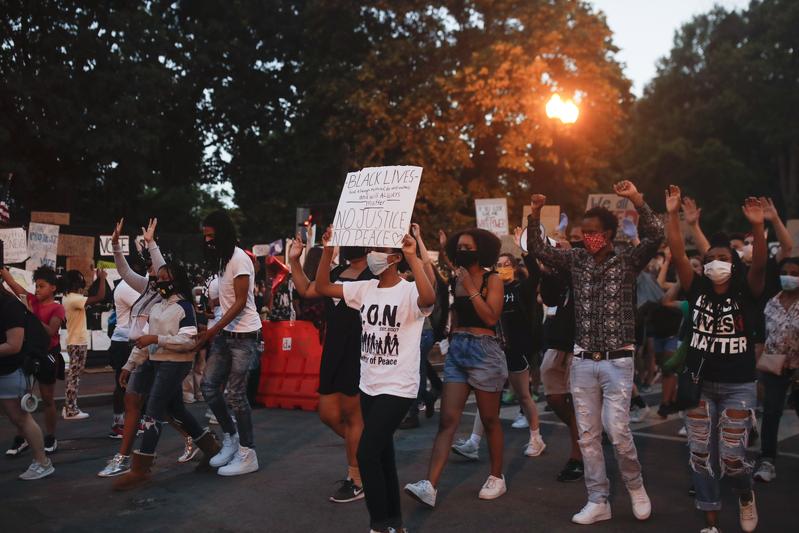 Demonstrators protest, June 8, 2020, near the White House in Washington, over the death of George Floyd, a black man who was in police custody in Minneapolis. (MAYA ALLERUZZO / AP)
Demonstrators protest, June 8, 2020, near the White House in Washington, over the death of George Floyd, a black man who was in police custody in Minneapolis. (MAYA ALLERUZZO / AP)
Several US states are recording big jumps in new cases of COVID-19, including California and in the South, as some health officials say the increase has been caused by greater testing, but concerns also are mounting that reopenings and protests sparked by the death of George Floyd could increase the spread of the virus.
Some infectious disease experts said that because the protests were being held outdoors, the open-air settings could mitigate the risk of transmission
The US is still seeing roughly 20,000 new cases a day, ranging from one case a day, on average, last week in Hawaii, to up to 2,614 new cases a day in California, CNN reported.
California, Florida, Texas, Arizona, North Carolina, Tennessee, Utah and Arkansas, among others, have all logged growth in confirmed cases, according to a Johns Hopkins University tabulation of a five-day moving average.
The Washington Post reported on Sunday that its data indicates that 23 states, as well as the District of Columbia and Puerto Rico, have seen an increase in the rolling seven-day average of coronavirus cases compared with the previous week. Most have registered an increase of 10 percent or more.
ALSO READ: US protesters march again, demanding police reforms
Public health officials across the nation are looking at caseloads and hospitalizations to see if there is a spike in infections resulting from mass protests against racism and police violence following the death of Floyd.
The Centers for Disease Control and Prevention released a statement saying it was "monitoring closely" the demonstrations. The largest protests took place across the country on Saturday as the number of coronavirus deaths in the US surpassed 110,000.
In Los Angeles, Mayor Eric Garcetti warned that the protests could become "super-spreader events".
Maryland Governor Larry Hogan expressed concern that his state would see a spike in cases in about two weeks, which is about how long it takes for symptoms to emerge after a patient is infected.
Keisha Lance Bottoms, the mayor of Atlanta, Georgia, advised people who were out protesting "to go get a COVID test", as did New York Governor Andrew Cuomo.
Some infectious disease experts said that because the protests were being held outdoors, the open-air settings could mitigate the risk of transmission. Many of the demonstrators were wearing masks, and some appeared to be avoiding crowding too closely, but other protesters were not using any face coverings or avoiding close contact.
Transmission risk
"Yes, the protests are outside, but they are all really close to each other, and in those cases, being outside doesn't protect you nearly as much," said Howard Markel, a medical historian, to The New York Times.
"Public gatherings are public gatherings-it doesn't matter what you're protesting or cheering. That's one reason we're not having large baseball games and may not have college football this fall."
Meanwhile, New York, New Jersey and Massachusetts-which together accounted for a quarter of all COVID-19 deaths in the US-are seeing a substantial slowing of new cases.
In California, counties are continuing to allow businesses to reopen even as the state saw a 40 percent jump in cases over the last week, National Public Radio, or NPR, reported.
READ MORE: New York starts to shake off virus; Europe recovering
Los Angeles County, with a population of more than 10 million, has the highest number of cases in the state. Numbers tracked by NPR show that, on average, health officials report around 1,300 new cases daily. The county has blamed slow lab results for a backlog while acknowledging that community transmission has been ticking up, especially among communities of color.
Health officials in Los Angeles county made cloth face coverings mandatory at all times when outside the home, while San Diego County requires masks only when one is within 1.8 meters of another person.



